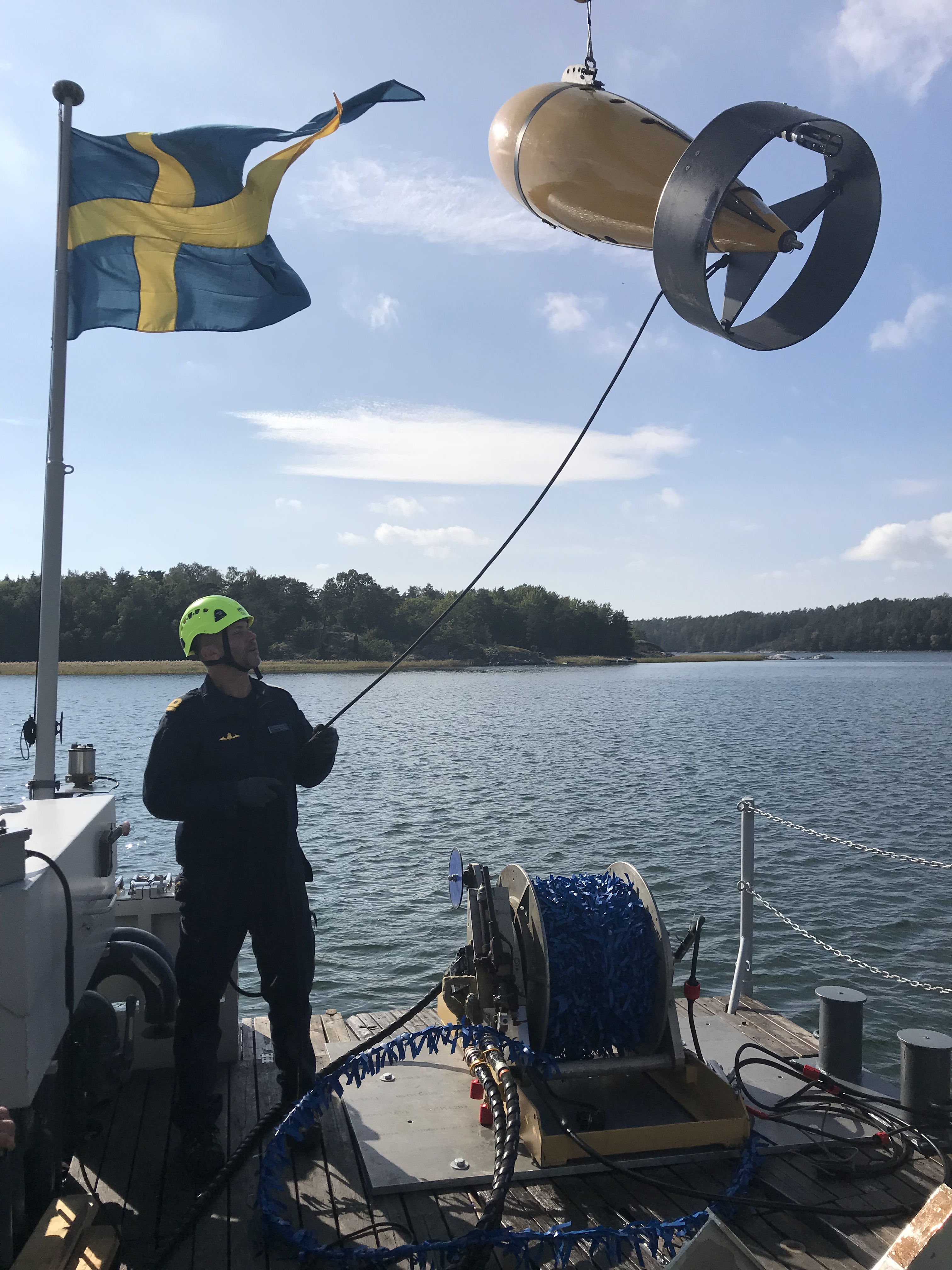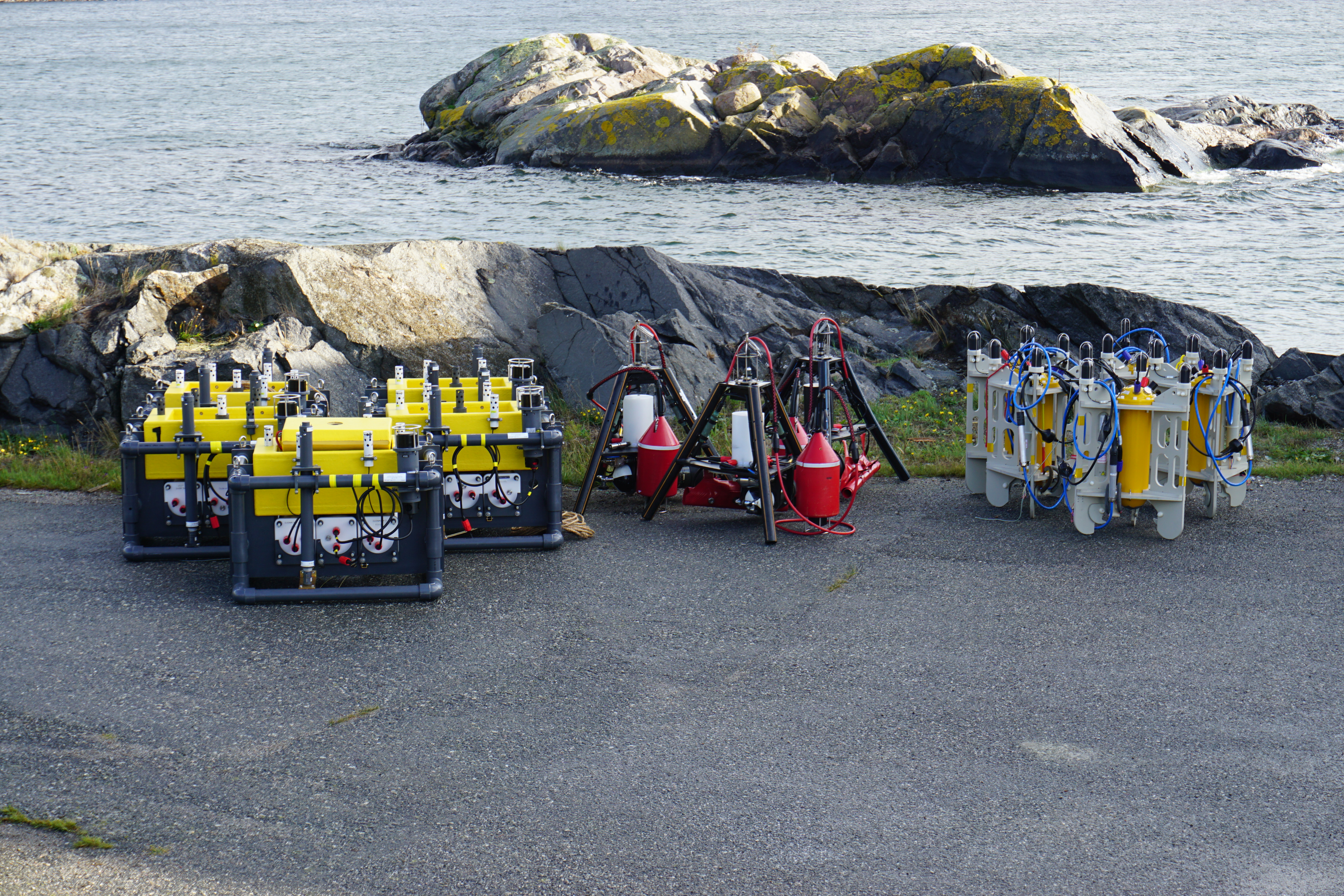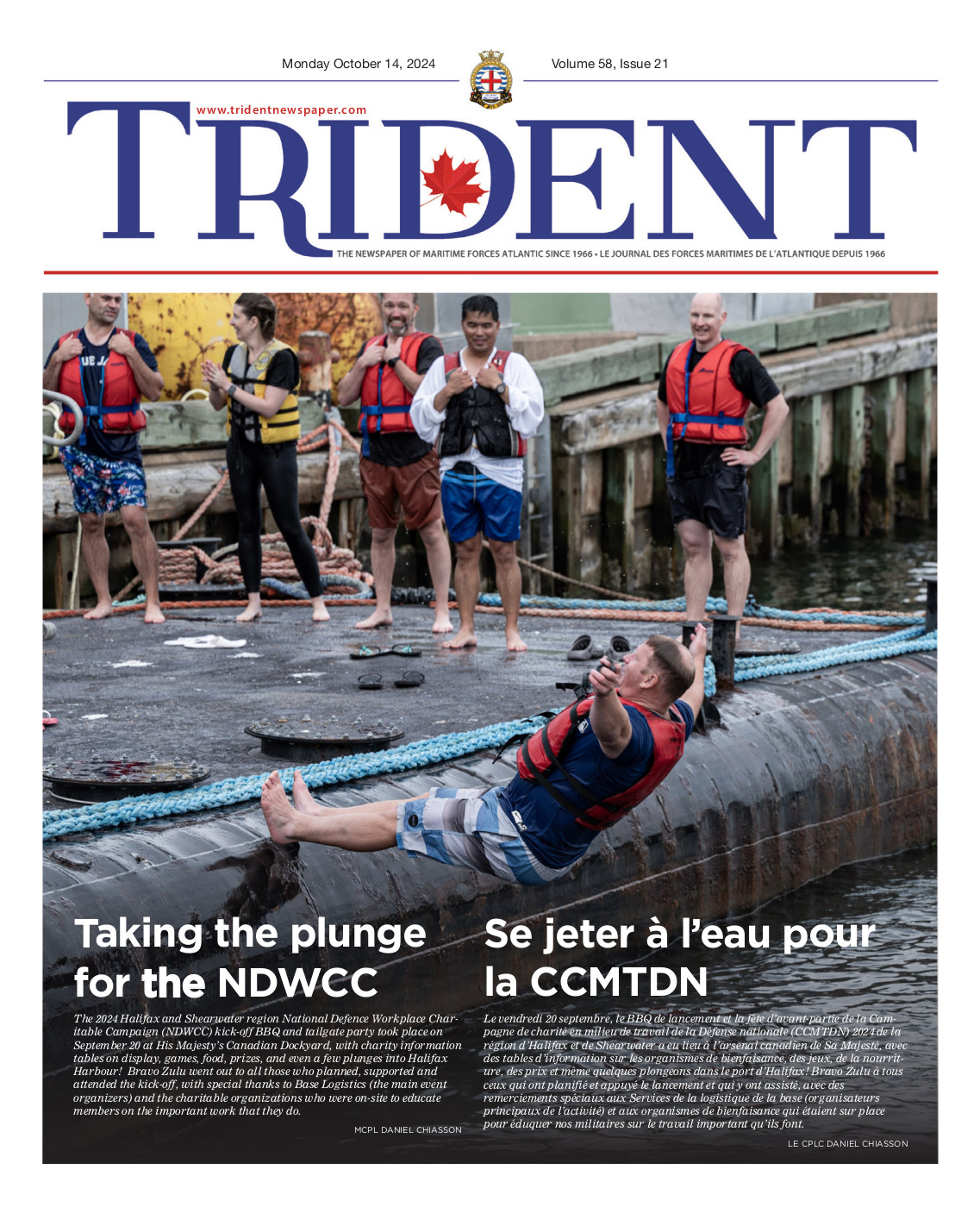
SUBMITTED
Defence scientists team up for underwater sensor trials
By Mark Baldin and Michael Simms,
DRDC – ARC

In September and October of 2018, Sweden hosted research teams from Canada and Norway to conduct the second of three joint international trials of the Distributed Underwater Sensor Network (DUSN). The Swedish Defence Research Agency (FOI) and SAAB teams worked with the Canadian research team at DRDC – Atlantic Research Centre (ARC) and the Norwegian (FFI) team to test the ability of each agency’s underwater nodes to perform surveillance, to track targets, and to be interoperable with all other nodes. Canada hosted the first of these trials in 2017 at the Canadian Forces Maritime Experimental Test Ranges (CFMETR) with the third planned for 2020.
All nodes, regardless of the where they were developed, are autonomous passive sonar systems capable of communicating with each other underwater using acoustic modems. These nodes work together as a group for detecting a contact, obtaining its location through cross fixing, and then relaying the information to an operator.
Each country designed and built nodes for operating in their own national waters. DRDC-ARC constructed six DUSN nodes. FOI and FFI each brought four nodes. These fourteen independent nodes formed an underwater acoustic network over a small area. September 19, 2018 was the first time that nodes from all countries successfully worked together to acoustically cross fix and track a contact in an autonomous manner.
FOI and the Royal Swedish Navy (RSN) provided test facilities and four vessels while SAAB provided and operated an Autonomous Underwater Vehicle (AUV) in support of the field trial. The four vessels helped deploy and recover the nodes and other equipment while also acting as contacts for tracking purposes. One vessel was also used to deploy and tow a Canadian sound source, which is used to simulate the acoustic signature of a passing contact. The AUV was also loaded with predefined signatures and tones to simulate different types of contacts and was sent through the sensor field.

SUBMITTED
The preparations for these trials began years ago. Every trial undertaken by DRDC – ARC is the culmination of the efforts of multiple internal sections such as procurement, administration, material and technical support. Outside agencies such as Base Logistics and HAZMAT staff worked diligently with DRDC to ensure that our equipment made it safely to Sweden and back.
The 2018 field trial demonstrated many successful achievements in autonomous tracking and highlighted a few areas that will be improved upon moving forward. The scientific successes achieved during this trial are proof that strong collaborative relationships with international partners act as multipliers in research efforts. Our Swedish hosts provided every support possible during the conduct of the trial and their hospitality was second to none. The professionalism, dedication and hard work of the RSN sailors was instrumental in the success of all trial partners. DRDC – ARC is proud to provide the Royal Canadian Navy with cutting edge research in support of their objectives.





